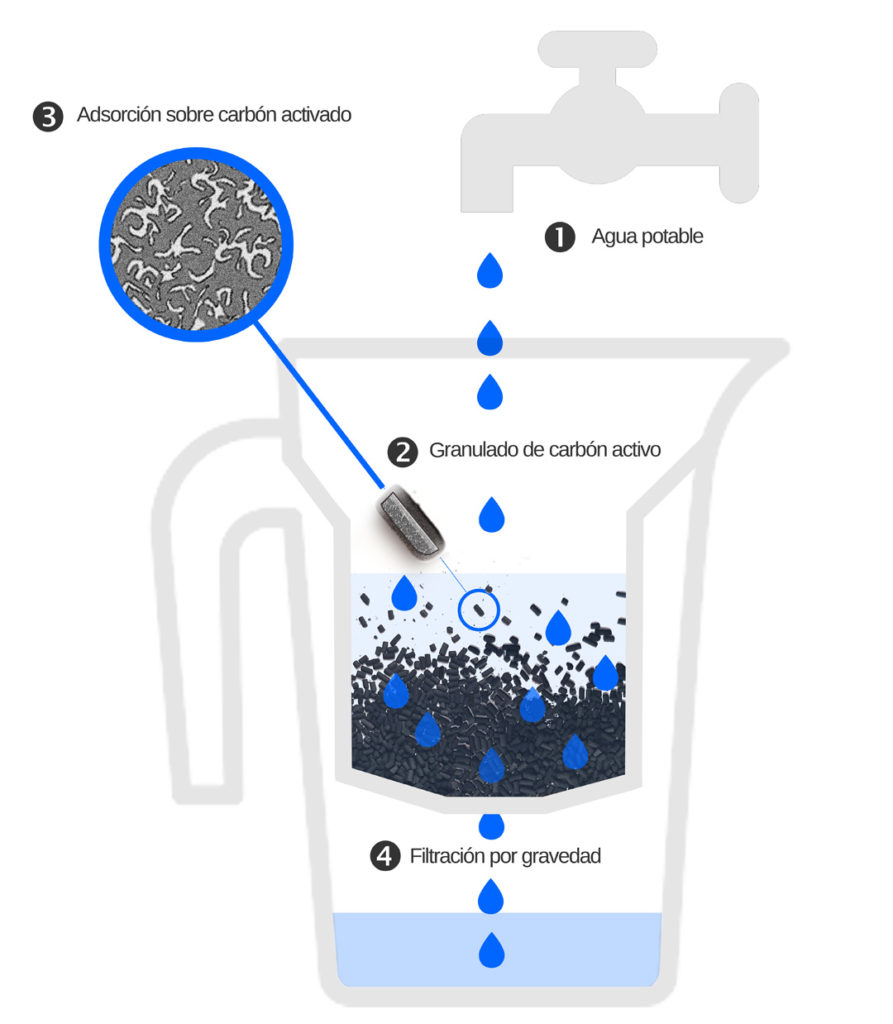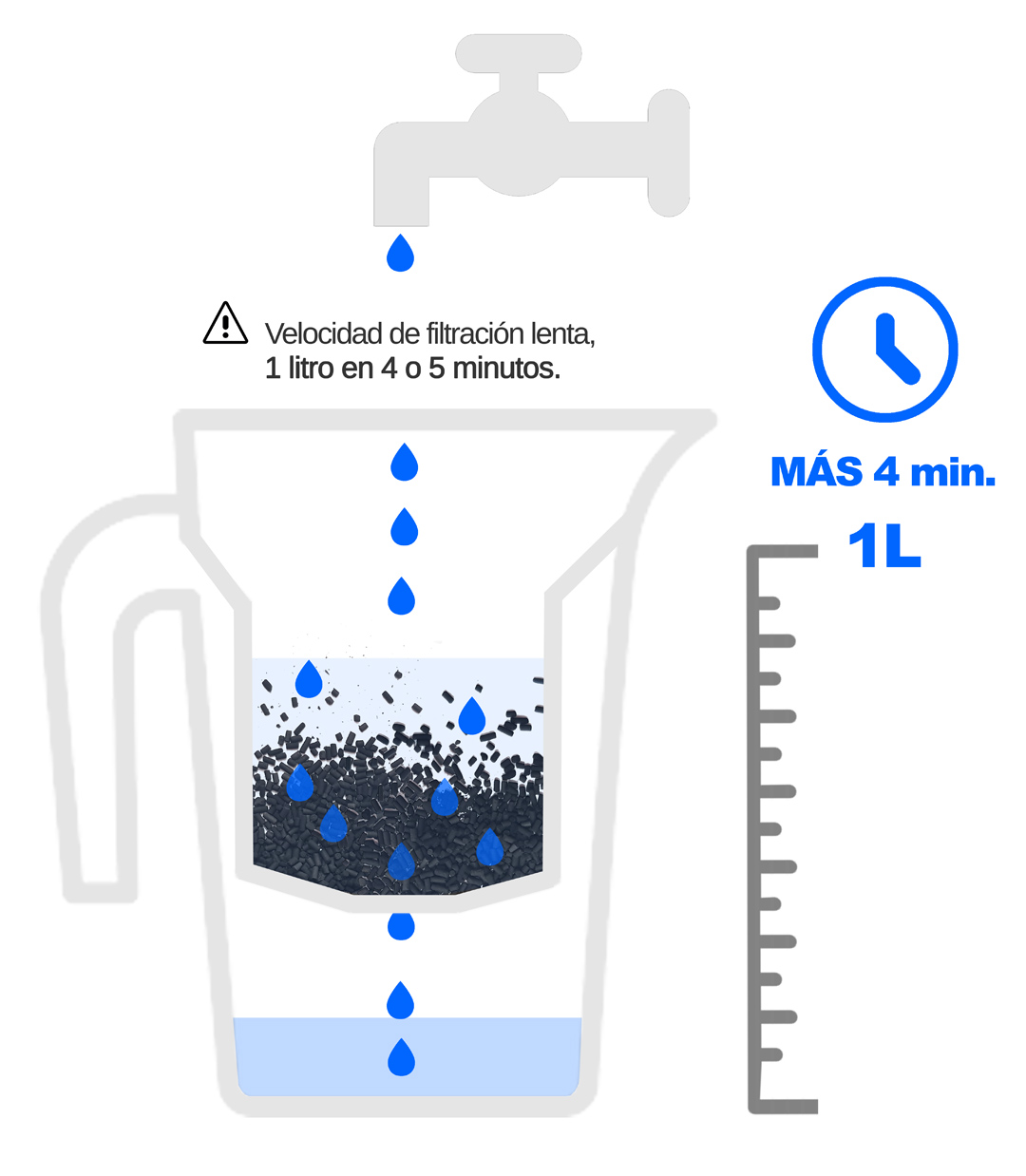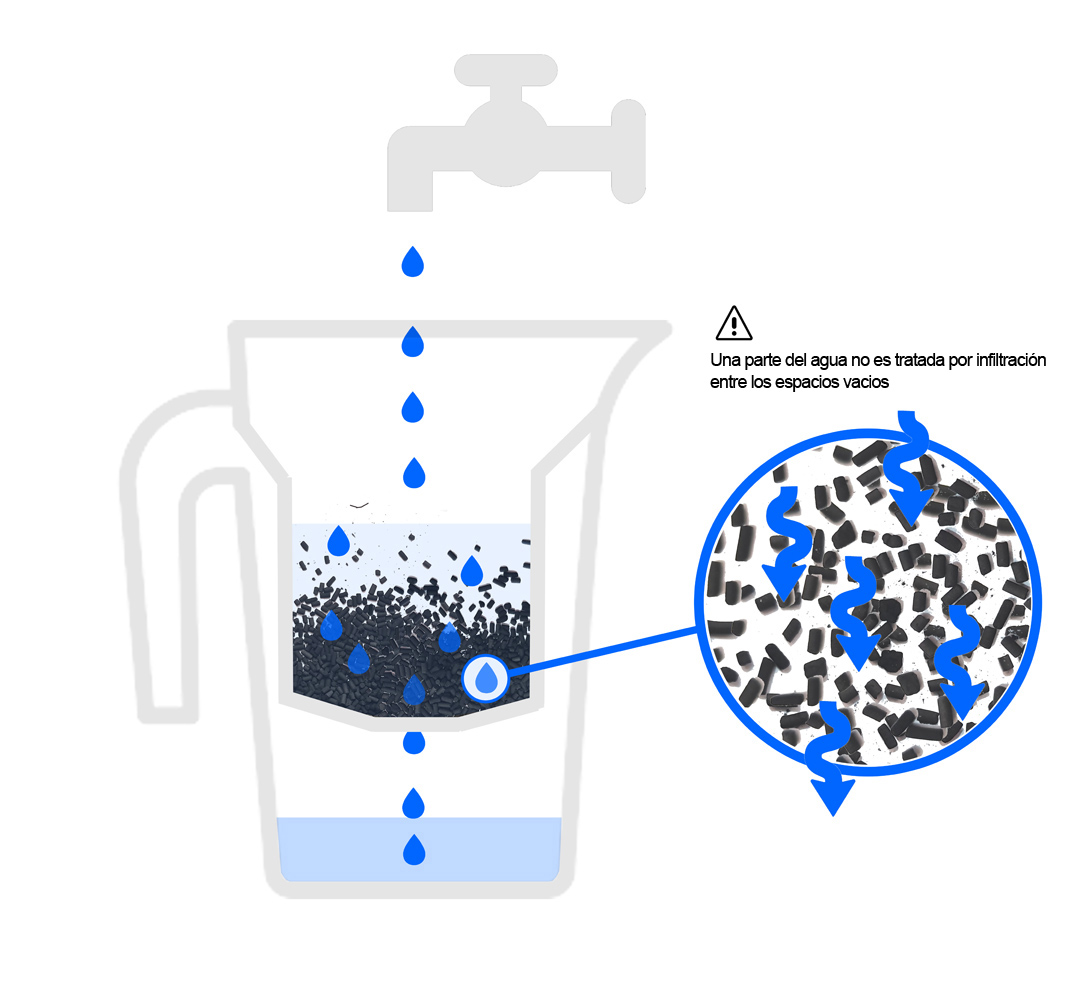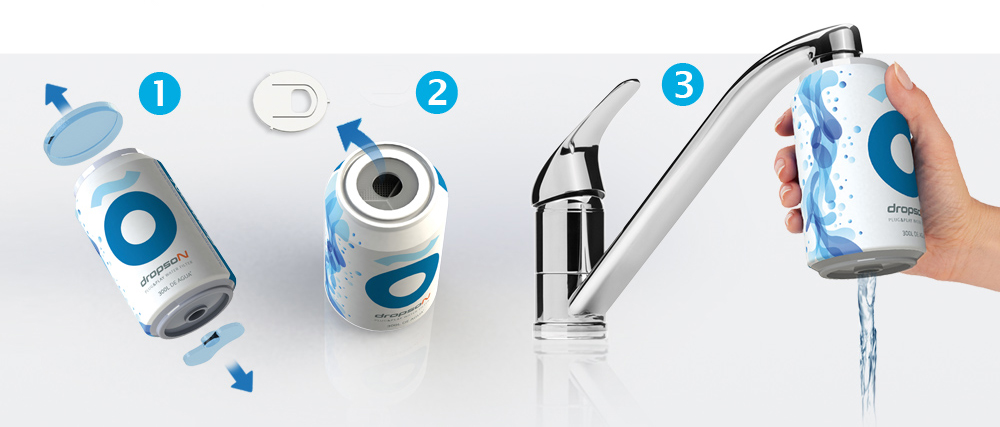Filter jug, the perfect filter?

The filter jug has undoubtedly been the domestic water filter par excellence last over recent years. Easy to use, no installation required, small size, portable and low cost are some of the apparent advantages that have led to its success, but despite all this, there are some disadvantages to consider and we can not ignore the fact that currently can not compete with new generation filtration systems.
The filter jug or purifying jug is a domestic water filtration system used to improve the taste and quality of tap water, reducing to a greater or lesser extent components and impurities present in tap water.
How does a filter jug work and how does it affect to taste and water quality?
.
HOW DOES A FILTER JUG WORK?
The technology of the filter jug is based on the gravity filtration system, through a filter bed cartridge and an adsorption process (3), generally made of granular activated carbon.
The purifying jugs have a built-in tank inside where a filter cartridge is placed. When the water jug refills (1), it passes through the cartridge (2) to the bottom of the jug(4), where the filtered water collects.

. Operation of the filter jug technology
.
1. Slow filtration speed
The filter jugs operate through a gravity filtration system. This means that it is necessary to fill the jug and wait for the water to seep through the filter cartridge by gravity.
This type of filter has a very slow filtration speed and requires a large filtration area. For this reason, it is very impractical to cook or fill a glass of water quickly, as getting a liter of water can take few minutes.
In addition, activated carbon filters have the disadvantage of requiring more contact time with water for the purification process to be effective.

. Diagram of the filtration speed of a filter jug
2. Inefficient water filtration
The cartridge of a water filter jug is usually composed of a mixture of granular activated carbon and ion exchange resin.
Granular Activated Carbon (GAC) is a variation of the active carbon used in water treatment for the adsorption of a wide range of compounds, especially substances that cause bad taste and odour, such as chlorine and other chemicals.
Unlike PAC (powdered activated carbon), GAC allows more non-adsorbent substances to pass between the granules. Therefore, its filtration capacity is lower than other filter media.
Its filtration system is not fully effective and there is water that is not treated by infiltration between the empty spaces. In addition, the small size of the cartridge makes it difficult to filter out elements such as excess minerals or heavy metals.

Some of the water is not treated by infiltration between the empty spaces
3. Risk of contamination
Water jugs with filters have a very high risk factor for bacteriological contamination because they are open filtration systems. The stagnant water inside the cartridges, in continuous contact with the activated carbon, promotes the proliferation of bacteria and aerobic contamination through aeration.
Many filter systems use silver salt to impregnate the granular activated carbon to eliminate and prevent the formation of bacterial colonies. However, silver is a heavy metal and can migrate to water. Even with this material, the jugs do not achieve a sufficient bacteriostatic effect.

There is a risk of contamination from open filtration systems in filter jugs.
UNFAVOURABLE OPINION OF THE OCU TOWARDS FILTER JUGS
According to the OCU (Organization of Consumers and Users), the filter jugs do not balance the water or fight the substances they claim to fight.
The filter jug uses a basic but inefficient technology based solely on activated carbon. Granulated activated carbon traps chlorine, among other substances, but only to a limited extent, because when it reaches its maximum capacity, it becomes saturated. At that point the water passing through it would be more contaminated than if it did not pass through the filter.
In its latest study, the OCU stresses that the pore size of the activated carbon also influences the filtering capacity of the jar. This means that, depending on the space between the activated carbon granules, unwanted substances can filter through the water with the effect of gravity.
NEW FILTRATION TECHNOLOGY, THE DROPSON FILTER CAN
Dropson has developed a domestic water filtration technology capable of instantly converting your tap water into table water of high taste quality, in a simple and economical way.
Perfect water in an instant

Designed to act on a continuous flow of drinking water, the Dropson filter can requires less exposure to treatment than a filter jug. It is capable of filtering up to 1´5 litres of water per minute, guaranteeing excellent quality.
.
Faster, more efficient, higher water quality
Fits all types of taps and takes up very little space in the fridge. A single can has the capacity to filter over 300 litres of water. Can you imagine 300 litres of water in your fridge? Exactly, they’d take up a lot of space.
The Dropson water filter is portable, disposable and recyclable, allowing you many more applications than any other water filter. Without installations or the need for replacement cartridges, you can quickly, easily and conveniently filter your tap water into top quality water.
.
100% natural technology
Designed with biomaterials, it is composed of an extremely effective micrometric membrane, based on vegetable microfibres, micronised activated carbon and natural chemical-free bacteriostatic elements, reducing bad taste and odour, sediment and water colouring.
Its filtering power eliminates chlorine, pesticides, heavy metals, etc., and its microfiltration power protects the water from micrometric organic particles, offering an additional protective barrier for doubly safe water.
The filtering can respects the natural minerals such as calcium, magnesium and bicarbonate of water as these are important and beneficial to health, achieving a more balanced water.
Extreme microfiltration test: filter jug vs. Dropson filter can
Filtration capacity
The filter can has an estimated capacity of 300L of water, approximately 3 months depending on the consumption of each household. Thanks to its 100% natural technology consisting of a micrometric membrane, it offers an additional protective barrier for doubly safe water.
Water jugs with filters, on the other hand, have a lower filtering capacity. Composed of granular activated carbon, this compound allows non-adsorbed substances to pass between the granules, which makes them less effective when water is not treated by infiltration between the empty spaces inside the cartridge. In addition, its capacity is 100L compared to 300L of the can.

Filtration speed
The Dropson can filters the water directly from the tap, in an instant. It has a direct filtration rate of 1 to 1.5 litres per minute, faster and more convenient than any filter jug. The filter jug, on the other hand, has a slower filtering speed and only filters 0.25 litres per minute, a disadvantage when it comes to requiring water instantly.

Interior hygiene
The can has a closed filtration system that guarantees a perfect hygiene inside the system thanks to its bacteriostatic, organic and chemical-free effect. To prolong this effect and ensure optimum conditions, the can is kept in the fridge.
In contrast, filter jugs are open filtration systems, so the risk factor for bacterial contamination is higher. In addition, the stagnant water inside the cartridges and in contact with the activated carbon promotes the proliferation of bacteria.

Cost per litre
The can is an economical alternative for consuming quality water. The average cost per litre is €0.05. Unlike other systems of similar price, a single can provides approximately 3 months of good water. Although the average cost per liter is similar and is between 0.04€ and 0.06€, you have to buy replacement cartridges every month.

.

.

